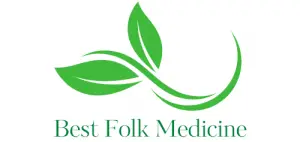Noticing small red dots on your skin can be alarming. They may appear suddenly, remain for weeks, or fade on their own. While most are harmless, red spots can sometimes signal deeper health concerns. Knowing the difference helps you decide when simple lifestyle steps are enough and when it’s time to seek medical help.
Common Types of Red Dots on the Skin
1. Cherry Angiomas
Cherry angiomas are benign growths of tiny blood vessels that look like bright red or purple pinpoints. They usually appear on the chest, back, arms, or shoulders and tend to increase with age. They are harmless but can bleed if scratched.
Source: Mayo Clinic
2. Petechiae
Petechiae are small, pinpoint red or purple dots caused by tiny blood vessels (capillaries) breaking under the skin. Unlike a rash, they don’t blanch (turn white) when pressed. Petechiae can occur from minor issues like intense coughing or exercise—but they may also indicate infections, low platelet counts, or vitamin deficiencies.
Source: Cleveland Clinic
3. Rashes and Allergic Reactions
Contact with allergens (like nickel jewelry, soaps, or plants), certain foods, or medications can cause itchy red dots that merge into patches. These are often a form of urticaria (hives).
Source: American Academy of Dermatology
4. Keratosis Pilaris (“chicken skin”)
Tiny red or flesh-colored bumps, often on the upper arms or thighs, are caused by keratin plugging hair follicles. While harmless, they may become more noticeable when skin is dry.
Source: NHS UK
5. Heat Rash (Miliaria)
Blocked sweat ducts in hot, humid conditions can trap sweat under the skin, leading to small, itchy red dots. Babies and those who exercise in heat are most affected.
Source: MedlinePlus
More Serious Causes to Watch For
While most red dots are benign, certain conditions require prompt medical evaluation:
- Autoimmune diseases: Lupus or vasculitis can cause vascular inflammation leading to red spots.
- Infections: Meningitis, endocarditis, or streptococcal infections can present with petechiae.
- Liver disease: Conditions like cirrhosis may lead to spider angiomas (web-like red spots).
- Blood clotting disorders: Low platelets or clotting factor deficiencies can cause unexplained petechiae.
Source: Cleveland Clinic & Johns Hopkins Medicine
Important: If red dots appear suddenly, spread quickly, or are accompanied by fever, headache, or difficulty breathing, seek emergency care.
Natural & Holistic Approaches for Red Dots
While medical evaluation is important for persistent or unexplained skin changes, holistic strategies may help manage harmless red dots or reduce recurrence when linked to lifestyle triggers.
1. Support Healthy Circulation
Since many red spots are linked to tiny blood vessel changes, supporting circulation is key.
- Eat foods rich in bioflavonoids and vitamin C (citrus, berries, leafy greens).
- Include omega-3 fatty acids (flaxseed, chia, walnuts, fish) to reduce inflammation.
- Practice gentle exercise (walking, yoga, tai chi) to improve blood flow.
Source: National Institutes of Health (NIH) on nutrition & vascular health
2. Reduce Skin Irritation
- Use fragrance-free, natural moisturizers (aloe vera, shea butter, coconut oil).
- Avoid harsh detergents and soaps that may trigger allergic rashes.
- Wear breathable cotton clothing to prevent heat rash.
3. Boost Immune & Skin Health Naturally
- Add zinc, vitamin D, and vitamin E through diet or supplements for healthy skin repair.
- Drink herbal teas with chamomile or calendula, both known for skin-soothing properties.
- Manage stress with deep breathing or meditation, as stress can worsen hives and rashes.
4. Hydrate & Detoxify
Staying hydrated helps skin flush toxins and maintain elasticity. Herbal support like dandelion root tea may aid liver function, which can reduce vascular-related spots.
When to See a Doctor
Seek professional evaluation if:
- Dots appear suddenly in clusters without clear cause.
- They don’t fade after a week or two.
- You also experience fever, bruising, or fatigue.
- They appear alongside new medications.
- They are painful, spreading, or associated with systemic symptoms.
The Bottom Line
Red dots on the skin have many potential causes—from harmless cherry angiomas and keratosis pilaris to more serious issues like infections or clotting disorders. Most are benign and manageable with simple lifestyle steps, but knowing when to seek medical guidance is crucial.
Holistically, supporting circulation, reducing irritation, boosting nutrition, and managing stress are safe, natural ways to improve skin health overall. By listening to your body and paying attention to your skin, you can catch potential issues early and keep your complexion healthy.
